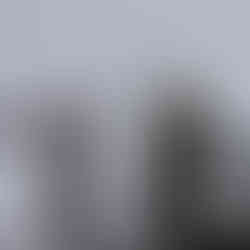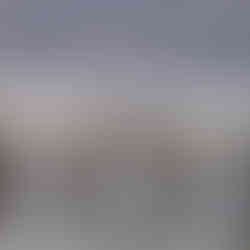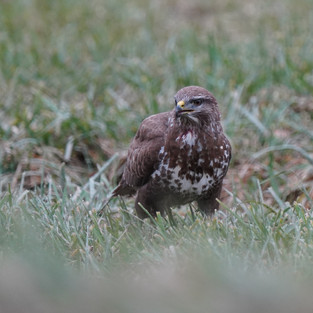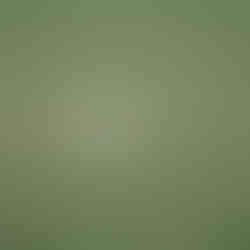Gear Review: MFT vs. FF / Lumix G9 vs. Sony Alpha A7III / Leica 100400mm vs. Sony FE200600mm
- Michael Heinz
- Jan 8, 2021
- 5 min read
When picking my gear for nature and wild life photography, I was making a conscious choice on the system I would invest in. I borrowed the Lumix G9 and the Sony A7III, equipped it with their standard wildlife lenses and made a shoot-out. Read in this article my personal conclusion, including some comparison pictures.

I am not intending to make this a lengthy review with a lot of text, nor do I want to make it a scientific correct one with lab tests and measurements. I want to highlight just very briefly the key difference I got to observe between my testing, and then focus a lot on providing example 1to1 comparison shots between the systems in real life, out on a trip for nature photography. Note: I am noting below my personal views, and opinions may certainly differ. I am trying to be as objective as I could, even though opinions are always subjective. I made a system decision, as a result of my own preferences, and yours may be very different.
Comparison by main factors driving the decision making for me
Size and portability: I admit that this is probably my most important decision factor, as I personally favor small size and easy portability, and am willing to compromise on other factors for it. I want to take my kit with me when hiking with my girlfriend, and pack it away with ease. To take it in a smaller bag, when visiting friends or family, when I just want to have my kit with me, in case I would go out for a walk. Definitely, there is a huge size and weight difference between the systems, and the Micro-Four-Third (MFT) system allows me to take a wild life ready setup with me, just in case I needed it. The Sony Full Frame (FF) system however, I would personally only take with me, if I intend to capture wildlife, and if that wildlife photography would be my main purpose of the walk.

Ease of use: The Panasonic system is a lot easier to use in my eyes. This of course goes hand in hand with the size and portability factor. It is simply easier and more convenient to hold the 1.5kg of the Panasonic system, compared with the Sony kit, which is a about 1kg heavier. But ease of use is not only better with the Panasonic kit in my eyes because of its size - it is also the overall way the G9 handles compared with the A7III. The G9 grip is better in my eyes, and especially the button placement and functionalities are a lot easier to reach and much more convenient, making the G9 more fun to use to me.
"Binocular replacement" capability: I particularly love about the Panasonic system, that I can use it as a very poerwful binocular, so on my field trip with the MFT system, I don't need to take a binocular with me. This is different with the Sony system. The weight of the kit means you cannot steadily use the system as a binocular, or to just watch a bird. You rather take it up, take the shot, and take down the camera again, because it is not possible to hold the system up to the eye conveniently for more than few seconds of picture taking. This is different with the Panasonic system.
Picture sharpness, contrast: Definitely, the Sony system's sharpness is way superior to the MFT system. Even though on paper, the MFT Leica Zoom has the longer reach of 800mm FF equivalent, the Sony's 600mm Zoom allow much more detailed images, with a lot more contrast, when cropped to the same picture size.
Noise and low light ability: No doubt here as well, the Sony FF system's low light ability and noise in the pictures again is superior to the Panasonic MFT system's results. This is also not a surprise, as besides the bigger sensor, the lens is also much brighter with a 600mm apperture of f6.3, whereas the MFT aperture in FF equivalent terms is double at f12.6.
Bokeh: The FF system has the creamier and more pleasing bokeh, and the out of focus area is bigger. This is even with the lower max zoom range at 600mm compared with 800mm on the MFT system.
Autofocus: The Sony FF system's autofocus system is also better than the one in the Panasonic. It is a lot more reliable tracking birds in flight, and in general, it takes some more attention and checking on the Panasonic system if indeed a bird was captured in focus or not.
Price: The Panasonic system price is a bit lower than that of the Sony. The Sony A7III will cost around 1700-1800€, and the lens approximately 1600-1700€, summing up to combined 3500€. With a really exceptional deal like on Black Friday's, you may get it for around 3000€. The Panasonic system is about 1000€ less, with the G9 costing around 1000€, and the Leica lens about 1500€, summing up to 2500€. An exceptional deal may get you the system for about 2300€.
My personal conclusions
As per my above points, the Sony FF system produces the sharper images with more contast, less noise, nicer bokeh, it is better capable for shooting in low light and its autofocus system is more reliable. So if all you are prioritizing for pure picture quality, the Sony system is the better choice. However, the Panosonic convinced me on factors like size, weight, portability, and ease and fun of use, which are more important to me at this stage, than pure image quality. The possibility to use the G9 as a binocular saves me even more weight and size.
At the same time, there are ways and methods to decrease the gap in picture quality between both systems, namely the following:
The G9 has the better image stabilization. Using it, you can get longer shutter times, still giving you a decently sharp image, making up for parts of the higher noise. Of course though, it is often not possible to capture wild life at long shutter speeds, only if the subject holds still.
The most important in wild life photography in my opinion is getting close to the subject. At close distance to subject, the less sharpness of the MFT system is less noticeable, also the higher noise is less of an issue here. The bokeh gets creamy also on MFT system, if you get close enough to the subject.
The G9 requires more intensive post processing, to clean the noise, sharpen the images, and given them more structure.
Real Life comparison shots
To support you in making your own gear decision, or just formulating your own system opinion, I am providing in the attached gallery comparison shots from the field. Conditions: These pictures had been taken at their max focal length of 600mm on the Sony, and 800mm on the Panasonic. I cropped the images of the Sony to same size as the Panasonic, to be able to better compare picture quality. The first shot in the gallery was always taken with the Sony system, the second with the Panasonic.
There maybe few discrepancies in some cases, where animals had been moving closer or further away, but this effect should be minimal. Enjoy!



































































